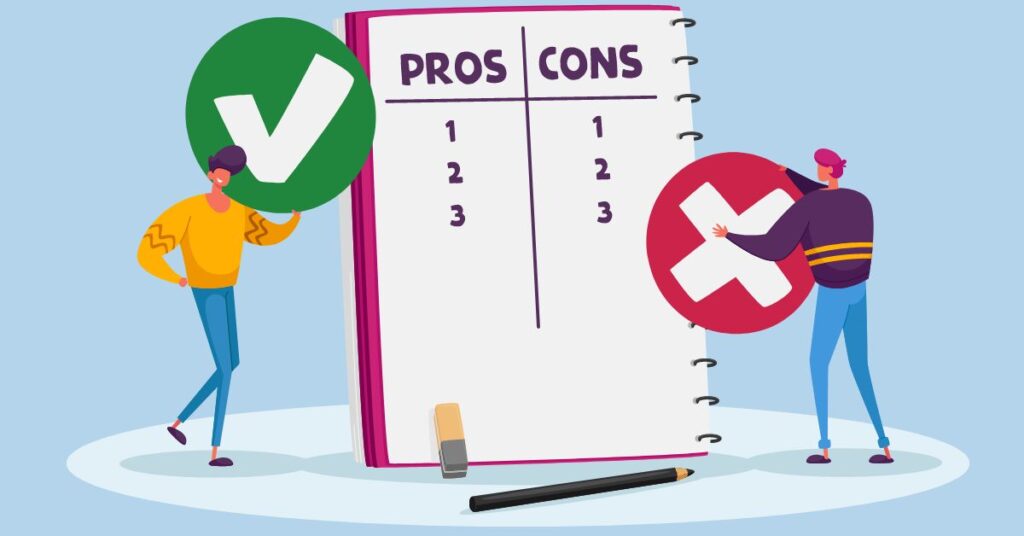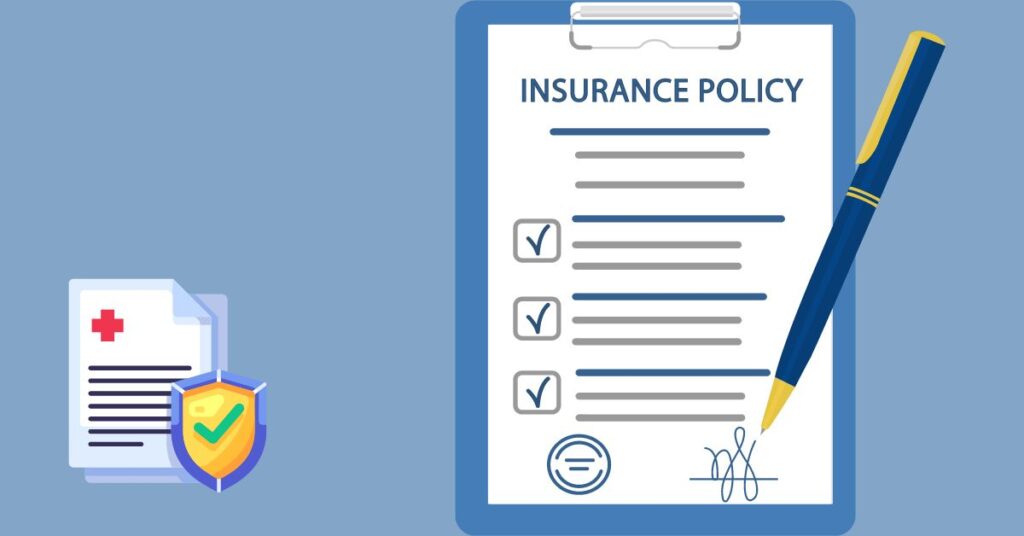Investing In Life Insurance A Comprehensive Guide To Start Today
Definition of life insurance
Life insurance is a contract between an insurer and a policyholder in which the insurer guarantees payment of a death benefit to named beneficiaries upon the insured’s death. It is a way to protect your loved ones during your untimely death financially.

Investing in life insurance
Investing in Life insurance is essential because it provides financial security for your loved ones during your death. It can help pay for final expenses, such as funeral costs, outstanding debts, and living expenses. It can also provide a source of income for your family and help them maintain their standard of living. It also has tax benefits, which can be used to reduce taxes and maximize the benefits.
The types of life insurance available
Several types of life insurance are available, each with unique features and benefits. The most common types are term life insurance, whole life insurance, universal life insurance, and variable life insurance.
- Term life insurance covers 10, 20, or 30 years.
- Whole life insurance covers the entire insured’s life and has a savings component.
- Universal life insurance offers flexibility regarding premium payments and death benefit amounts.
- Variable life insurance allows the policyholder to invest the savings component in various investment options.
- It’s vital to understand the different types of life insurance available and how they differ to choose the right policy for your needs.

Term Life Insurance
Term life insurance is a type of life insurance that provides coverage for a specified time, typically 10, 20, or 30 years. The death benefit is paid to the beneficiaries if the insured person dies within the policy’s term.
If the insured person survives the policy term, the coverage ends, and no death benefit is paid. Term life insurance is typically the most affordable type and is often used to cover specific needs, such as a mortgage or a child’s education.
Whole Life Insurance
Whole life insurance, also known as permanent life insurance, provides coverage for the entirety of the insured’s life. It also includes a savings component, known as the cash value, which can grow over time and be borrowed against or used to pay premiums. Whole life insurance is typically more expensive than term life insurance, but it can provide lifelong coverage and a source of savings for the policyholder.

Universal Life Insurance
Universal life insurance is a type of permanent life insurance that offers flexibility regarding premium payments and death benefit amounts. The policy’s cash value component can be invested in various options, and the policyholder can adjust the death benefit and premium payments as needed. Universal life insurance can provide lifelong coverage and the potential for cash value growth, but it is also typically more expensive than term life insurance.
Variable Life Insurance
Variable life insurance is a type of permanent life insurance that allows the policyholder to invest the savings component of the policy in various options, such as stocks, bonds, and mutual funds. The cash value and death benefit can fluctuate based on the performance of the investments. Variable life insurance can provide the potential for cash value growth, but it is also the most complex and riskiest type of life insurance.

Comparison of the different types of life insurance and their pros and cons
Term life insurance is the most affordable option for coverage for a specific need. Whole life insurance is more expensive but can provide lifelong coverage and a source of savings. Universal life insurance offers flexibility in premium payments and death benefit amounts but is also more costly.
Variable life insurance can provide the potential for cash value growth, but it is also the most complex and risky. It’s crucial to weigh the pros and cons of each type of life insurance and consider your personal needs and financial situation before deciding.
How much life insurance do you need?
Factors to consider when determining the amount of life insurance needed.
The amount of life insurance needed can vary depending on individual circumstances, but there are several key factors to consider when determining how much coverage is necessary.
These factors include:
- Final expenses: The cost of a funeral, burial, and any outstanding debts or medical expenses that may need to be paid.
- Income replacement: The amount of income the insured person’s family would need to maintain their standard of living.
- Future expenses: Any expenses the family may incur, such as a child’s education or retirement expenses.
- Current and future debts: Any debts the insured person may have, such as a mortgage or credit card debt, would need to be paid off in the event of their death.
- Assets and investments: Any assets and investments that the family may have, such as savings accounts or real estate, that can be used to help support them financially.

How to calculate your insurance needs
One way to calculate the amount of life insurance needed is to use the “needs analysis” method. This involves:
- Adding up the cost of final expenses and any outstanding debts.
- Estimating the income the family would need to maintain their standard of living.
- Add any future expenses, such as a child’s education or retirement expenses.
- Subtracting any assets and investments the family may have that can be used to help support them financially.
- The final number obtained is the estimated amount of life insurance needed.
Another method is to use online life insurance calculators, which can estimate the amount of life insurance needed based on the information provided by the user.
It’s essential to remember that the amount of life insurance needed can change over time, so it’s critical to review your coverage regularly and adjust as needed. It’s also vital to consult with a financial advisor or insurance agent for a more detailed and professional analysis of your life insurance needs.
Buying Your Policy

How to find the right policy
Finding the right life insurance policy involves understanding the types available and how they differ and assessing your personal needs and financial situation. It’s essential to consider the following when looking for a life insurance policy:
- The type of coverage you need (term, whole, universal, variable)
- The length of coverage you need.
- The death benefit amount you need.
- Any additional features or riders that you may want.
- Your budget and the premium payments you can afford.
How to compare different insurance options
Comparing different insurance options involves looking at each policy’s features, benefits, and costs. When comparing policies, it’s necessary to consider the following:
- The death benefit amount.
- The premium payments and how they may change over time.
- The length of coverage.
- The financial strength of the company.
- Any additional features or riders that the policy may offer.
Comparing policies from different insurance companies can help you find the best policy at the best price.

How to choose the right insurance company
Choosing the right insurance company involves assessing the financial strength and reputation of the company. It’s vital to consider the following when choosing an insurance company:
- The company’s financial stability and credit rating.
- The company’s history and reputation.
- The company’s customer service and claims handling process.
- Any additional products or services the company may offer.
How to purchase a policy
Purchasing a life insurance policy typically involves the following steps:
- Choose a policy and company that best meets your needs.
- Complete an application for coverage, which may require providing personal and medical information – Undergo a medical examination, if required by the insurance company – Review and sign the policy contract – Pay the initial premium payment.
It’s essential to remember that purchasing life insurance is a long-term commitment, so it’s vital to ensure you understand the terms and conditions of the policy before signing on.
It’s also important to shop around and compare policies from different insurance companies to ensure you get the best coverage at the best price. Lastly, consulting with a financial advisor or insurance agent can help you understand the process and make the best decision for you and your family’s needs.

Tax Implications of Life Insurance
How life insurance policies are taxed
The tax implications of life insurance policies can vary depending on the type of policy and the way it is used. In general, life insurance policies are not taxed on the death benefit paid out to the beneficiaries upon the insured person’s death. However, cash-value life insurance policies, such as whole life and universal life, may be subject to taxes on the accumulated cash value.
Premiums paid on life insurance policies are generally not tax-deductible, but some exceptions exist. For example, if a business owner takes out a life insurance policy on an employee, the premiums may be tax-deductible as a business expense.
How to use life insurance to reduce taxes
Life insurance can be used as a tax-efficient way to pass on wealth to beneficiaries. One way to do this is to use a trust to own the life insurance policy, which can help to avoid probate and reduce estate taxes. Another way is to use a charitable remainder trust, which allows the insured person to donate the death benefit to a charitable organization and receive a tax deduction.

Strategies for maximizing the tax benefits of life insurance.
One strategy is to use permanent life insurance, such as whole life or universal life, which can provide both a death benefit and a cash value component that can be used to accumulate wealth on a tax-deferred basis. Another strategy is to use riders, such as long-term care riders, which can provide additional tax benefits.
It’s vital to consult with a financial advisor or tax professional to determine the best strategies for maximizing life insurance’s tax benefits based on your circumstances. It’s important to remember that tax laws and regulations are subject to change, so it’s essential to stay informed and consult with a professional to ensure you take full advantage of the tax benefits available.
Wrapping Up – Investing In Life Insurance.
Life insurance is an essential investment for anyone who wants to ensure that their loved ones are protected financially in the event of their death. It can provide a death benefit that can help to cover expenses such as funeral costs, outstanding debts, and living expenses for beneficiaries. Life insurance can also provide peace of mind and security for the policyholder and their loved ones.
Several types of life insurance are available, including term life, whole life, universal life, and variable life. Each policy type has its pros and cons, and it’s essential to understand the differences and how they may fit into your situation.
Determining how much life insurance you need involves assessing your personal situation, including your income, debt, and the needs of your beneficiaries. Once you know how much coverage you need, you can start shopping around for the right policy and comparing different options.
Life insurance can have significant tax implications, and it’s essential to understand how policies are taxed and how to use them to reduce taxes. Strategies such as using trusts and charitable remainder trusts and using permanent life insurance policies and riders can help maximize life insurance’s tax benefits.
In conclusion, life insurance is an excellent investment that can provide financial protection and peace of mind for policyholders and their loved ones. Understanding the different types of life insurance, determining how much coverage is needed, and the tax implications of life insurance is crucial in making an informed decision and finding the right policy.
It is always recommended to consult with a financial advisor or insurance agent to ensure that you make the best decision for your needs. Remember, life insurance is a long-term commitment, and it’s essential to stay informed and review your policy regularly to ensure that it continues to meet your changing needs over time.

Additional Resources On Investing In Life Insurance
Government Resources
- The U.S. Government’s website for Life Insurance Consumer Information provides a wealth of information for consumers, including a glossary of terms, tips for shopping for life insurance, and a list of state insurance departments where consumers can file complaints or ask questions.
- The Social Security Administration’s website provides information on how life insurance benefits may affect your social security benefits and how to claim them.
Industry Resources
- The National Association of Insurance Commissioners (NAIC) offers a Life Insurance Policy Locator Service to help consumers locate lost or forgotten life insurance policies.
- The American Council of Life Insurers (ACLI) is a trade association representing the industry, and its website offers a wealth of information on life insurance and its benefits.
Educational Resources
- The Life and Health Insurance Foundation for Education (LIFE) is a non-profit organization that provides educational resources and tools for consumers on the importance of life insurance.
- The Life Insurance Settlement Association (LISA) is a non-profit trade association for the life settlement industry and offers educational resources for consumers.
It is important to consult with reliable resources to make sure you are making an informed decision and be aware that some resources may have a bias toward one product or company. It is always good to consult with a financial advisor or insurance agent to ensure that you make the best decision for your needs.







